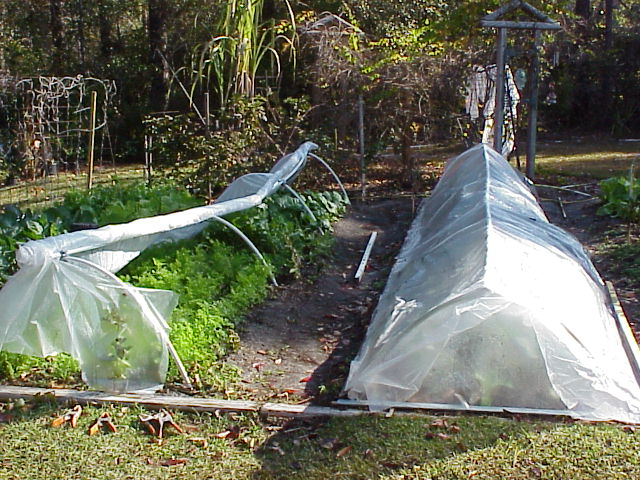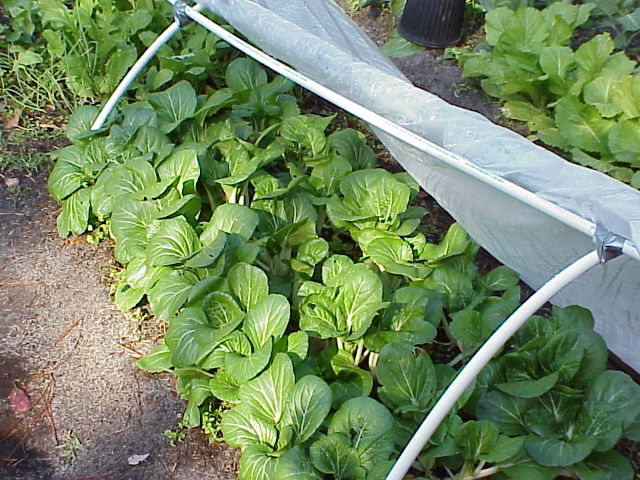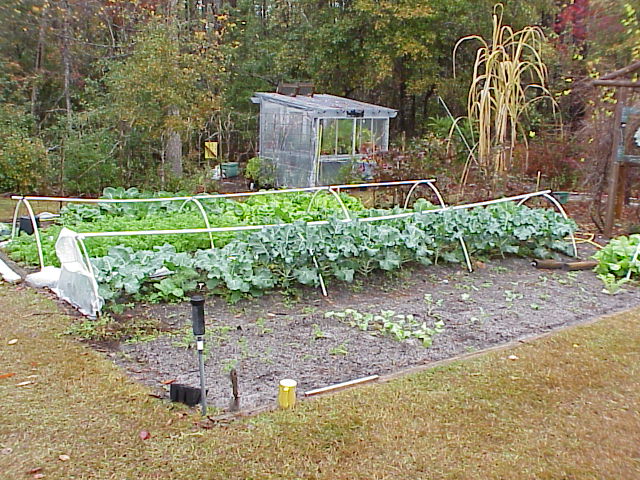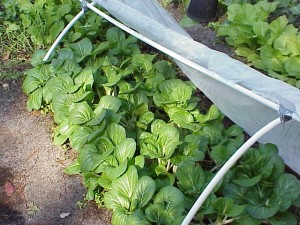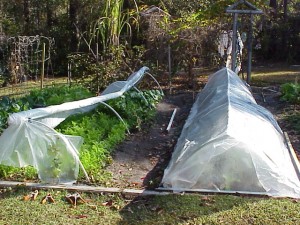Every fall gardening season, Florida homeowners enjoy growing their own vegetables but are faced with cold weather issues. As early as November 1, a chance of frost is possible in Northwest Florida.
Most Cole Crops can be planted until November, but they must be protected from the cold weather or they will need to be replaced. A good variety of hardy plants should be planted in order to prevent total devastation of the garden by extremely cold weather. If tender plants are used, the following considerations must be observed.
Site selection for tender plants is the number one factor to be considered when preparing for a freeze. Vegetable plants need a site with good air drainage, and somewhat high in elevation relative to the area; not in a low area where cold air settles. Arranging tender plants along a barrier to protect them from cold winds improves the plants cold protection, especially from very hard freezes. Another factor to consider is that poorly drained soils result in weak shallow roots which are more susceptible to cold injury.
Plants grown with the correctly applied rate of nutrients will tolerate colder temperatures better and recover from cold injury faster than plants grown with little to no nutrients. Watering vegetable garden plants before a freeze can help protect plants. A well-watered soil will absorb more solar radiation than dry soil and will re-radiate heat during the night. This can improve hardiness by as much as 2°F. However, saturated soil conditions can damage the root systems of most plants over a few days, so make sure the ground is well-drained.
Healthy vegetable plants are more resistant to cold than vegetable plants weakened by disease, insect damage, or nematode damage. Routine inspection for pests and implementation of necessary control measures are essential. Feel free to contact your local county extension office for information on pest identification and recommended controls.
Plastic or cloth coverings can help protect vegetable plants more from frost than from extreme cold. Covers that extend to the ground and are not in contact with the vegetable plants’ foliage may reduce cold injury to the plant. If the vegetable plant foliage is in contact with the cover it is often cold burned or injured because of heat transfer from the foliage to the colder cover. Some examples of excellent plant covers are cloth sheets, quilts, commercial row cover such as “remay”, or black plastic. If plastic covering is used, it is extremely important to remove the covering during the day to provide ventilation of trapped heat. Failure to do so will result in certain death to the vegetables. To learn more on cold protection of vegetable plants please visit this EDIS article on frost protection.
- Vegetable Garden Insect and Disease Management - June 10, 2015
- Insect Problems in the Heat of Summer - May 8, 2015
- Gardening in a Bucket - April 14, 2015

